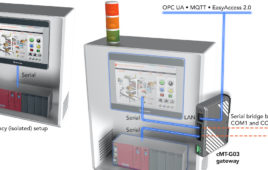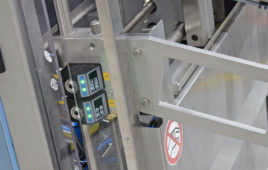 While looking for ways to monetize data, operators must also find ways to offload it. Wi-Fi has become a great solution to meet these demands, especially with the FCC’s recent decision to open up 100 MHz of spectrum in 5 GHz bands for unlicensed Wi-Fi use. Still, large-scale Wi-Fi deployments come with concerns for wireless engineers, including hurdles surrounding coverage, density, capacity, and interference.
While looking for ways to monetize data, operators must also find ways to offload it. Wi-Fi has become a great solution to meet these demands, especially with the FCC’s recent decision to open up 100 MHz of spectrum in 5 GHz bands for unlicensed Wi-Fi use. Still, large-scale Wi-Fi deployments come with concerns for wireless engineers, including hurdles surrounding coverage, density, capacity, and interference.
The situation is complex, and there are no easy answers – but there are answers, at least to three primary questions, that wireless engineers should ask.
1. What’s the best way to analyze a specific location?
As in real estate, the mantra around the successful deployment of a large-scale Wi-Fi network is simple: It’s all about location, location, location. But how can an engineer gauge the potential efficacy of an Access Point (AP) before hitting the “on” switch?
They should look closely at mobile consumers, who are directly impacting data networks. Engineers can capture valuable, anonymous information from consumer usage patterns, and get a good sense of the devices and amount of wireless data being used in a particular location (a shopping mall, for example, or sports facility). The information gleaned can help operators and their partners better understand where potential users are, how they’re using their devices, and the potential for a WiFi deployment.
2. Is 2.4 or 5 GHz the better option?
It depends. Each option offers different use cases and advantages.
Although 2.4 GHz networks cover a wider range than 5 GHz, that benefit comes with a price. 2.4 GHz networks have become so polluted over the years that their performance has begun to suffer greatly. Recently, TeleWorld Solutions performed testing on a single block in downtown Manhattan and found that it contained more than 40 unique broadcasters on 2.4 GHz radios. Needless to say, reception was very congested.
Conversely, 5 GHz networks cover smaller spaces, which could limit the footprint of a Wi-Fi deployment, but offer potentially less congestion. That’s why, given a choice, it may be the best option for new deployments, even if it means more of an investment in additional solutions to cover wider areas.
Wi-Fi networks can also provide non line-of-sight backhaul options at 5 GHz, which can help alleviate congestion on small cell networks. This provision can be particularly helpful in dense, outdoor, urban environments where access to fiber and microwave backhaul might be difficult.
Engineers can also create “mesh network” using 5 GHz radios, which can help in areas where there is no coax or fiber to connect the Wi-Fi network to a central hub. In these cases, the radios can be used to “mesh” one AP to a “root” AP that is connected to a hub via coax or fiber, creating a multipoint deployment that extends the reach and capabilities of the network. This requires a deep knowledge of the inner workings of mesh and root APs to ensure the link is never broken. In such cases wireless engineers may want to work with service providers that offer technical expertise and solutions specific to mesh deployments.
3. Will the new spectrum help, especially given the level of device penetration as it is today?
 Yes, but it will be dependent on how upcoming devices use that new spectrum. In other words, the spectrum must be allotted in order for manufacturers to plan for it in the devices that they will release in 2015 and beyond. Before this happens, the 5 GHz spectrum that currently exists will need to be exhausted.
Yes, but it will be dependent on how upcoming devices use that new spectrum. In other words, the spectrum must be allotted in order for manufacturers to plan for it in the devices that they will release in 2015 and beyond. Before this happens, the 5 GHz spectrum that currently exists will need to be exhausted.
While all of this seems complicated, there’s good news. For one thing, much of the infrastructure that is necessary for these deployments is already in place. Existing infrastructure, such as fiber and coax, can serve as conduits for data and the basis for new Wi-Fi networks. For another, there’s the opportunity for partnerships between service operators and wireless carriers, all of which are coming together to solve the data problem. Both of these factors improve the chances that a large Wi-Fi deployment can, despite its complexity, remain fairly cost-effective.
The foundation for new WiFi networks already exists; it’s just a matter of building upon those foundations. Doing so requires a great amount of planning and preparation, but all of it may be worth it to wireless operators seeking to turn data availability into profitability.
For more information visit www.teleworldsolutions.com.
Filed Under: M2M (machine to machine)




